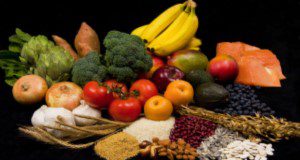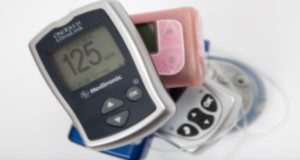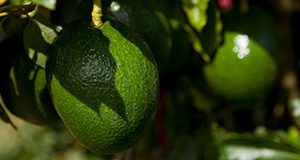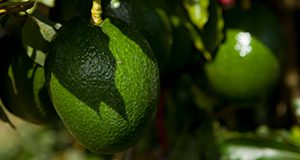Chronic kidney disease (CKD) is considered a public health issue within the United States because an estimated 37 million adults or 15% of the population have this disease. CKD is a disease characterized by the gradual loss of kidney function. Early prevention techniques such as a well-balanced diet reduce the progression of this disease. The purpose of this new 6-page article is to provide an overview of CKD and nutritional considerations. Written by Sofia Acevedo, Danielle Aycart, and Jeanette Andrade, and published by the UF/IFAS Food Science and Human Nutrition Department.
https://edis.ifas.ufl.edu/fs429
Tag: Recipes
Reducing Your Risk for Type 2 Diabetes: The Power of Food
Type 2 diabetes is a medical condition where you have too much sugar in your blood. According to the Centers for Disease Control, nearly 1 in 10 adults have Type 2 diabetes and 1 in 3 adults have pre-diabetes. This new 14-page publication of the UF/IFAS Food Science and Human Nutrition Department describes the modifiable risk factors for type 2 diabetes and tips to reduce your risk for diabetes. It also includes several example recipes. Written by Elena Torna, Jodi Fitzgerald, Danielle Nelson, Madison Woodard, and Jeanette Andrade.
https://edis.ifas.ufl.edu/fs397
Reducing Your Risk for Cancer: The Power of Food
Cancer is the #2 cause of death within the United States, where 2 out of every 5 people will be diagnosed with some form of cancer within their lifetime. Forty-five percent of cancer deaths may have been caused by risk that factors that you can change, such as weight, diet, and lifestyle. This new 6-page publication describes the modifiable risk factors for cancer and tips to reduce your risk for cancer. Written by Jodi Fitzgerald, Danielle Nelson, Madison Woodard, and Jeanette Andrade, and published by the UF/IFAS Food Science and Human Nutrition Department.
https://edis.ifas.ufl.edu/fs392
South Florida Tropicals: Avocado
This 4-page fact sheet is a major revision that discusses the background, availability, selection, ripening, storage, uses, yield, nutritive value, and basic, safe preparation of the avocado. The document also contains several avocado-based recipes. Written by Linda B. Bobroff and Amy Simonne, and published by the UF/IFAS Department of Family, Youth and Community Sciences, revised January 2018.
http://edis.ifas.ufl.edu/he606
South Florida Tropicals: Carambola
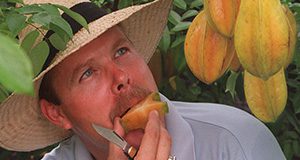 The carambola or star fruit is native to Southeast Asia. It was introduced to Florida about 100 years ago. This 4-page fact sheet is a major revision that discusses availability, selection, uses, nutritive value, and food safety during preparation of carambola. This document also includes several recipes. Written by Amy Simonne and Linda B. Bobroff, and published by the UF Department of Family, Youth and Community Sciences, revised April 2017.
The carambola or star fruit is native to Southeast Asia. It was introduced to Florida about 100 years ago. This 4-page fact sheet is a major revision that discusses availability, selection, uses, nutritive value, and food safety during preparation of carambola. This document also includes several recipes. Written by Amy Simonne and Linda B. Bobroff, and published by the UF Department of Family, Youth and Community Sciences, revised April 2017.
http://edis.ifas.ufl.edu/he613
Nutrition for Health and Fitness: Fat in Your Diet
We frequently hear about the epidemic of obesity. We also hear a variety of recommendations for how much and what type of fat we should have in our diets. With new research being published all the time, it can get confusing for consumers. This 8-page fact sheet is a major revision that provides tips to help individuals meet dietary guidelines and reduce health risks, as well as a few tasty recipes to try. Written by Linda B. Bobroff, and published by the UF Department of Family, Youth and Community Sciences, revised March 2017.
http://edis.ifas.ufl.edu/he695
Healthy Eating: Drink to Your Health
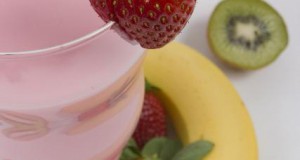
Shakes and smoothies are a great and delicious way to incorporate more fruits and nutrients into your diet. This 2-page fact sheet is a major revision which provides a variety of refreshing and exciting smoothie and shake recipes as well as preparation tips. Written by Jennifer Hillan, Emily Minton, and Linda B. Bobroff, and published by the UF Department of Family, Youth and Community Sciences. Original publication date: March 2004. Revised March 2012 and September 2015.
http://edis.ifas.ufl.edu/fy696
Nutrición para una mejor salud y condición física: el sodio en su dieta (FCS8129Span/HE986)
This 6-page fact sheet was written by Linda B. Bobroff , and published by the UF Department of Family Youth and Community Sciences, May 2011.
http://edis.ifas.ufl.edu/he986
FCS8219/HE696 Nutrition for Health and Fitness: Sodium in Your Diet
Revised! FCS8219, a 6-page illustrated fact sheet by Linda B. Bobroff, provides facts about sodium, sodium and high blood pressure, how to read food labels and cook with less sodium. Includes references, sodium intake checklist and recipes for low sodium foods. Published by the UF Department of Family, Youth and Community Sciences, October 2010.
http://edis.ifas.ufl.edu/he696
